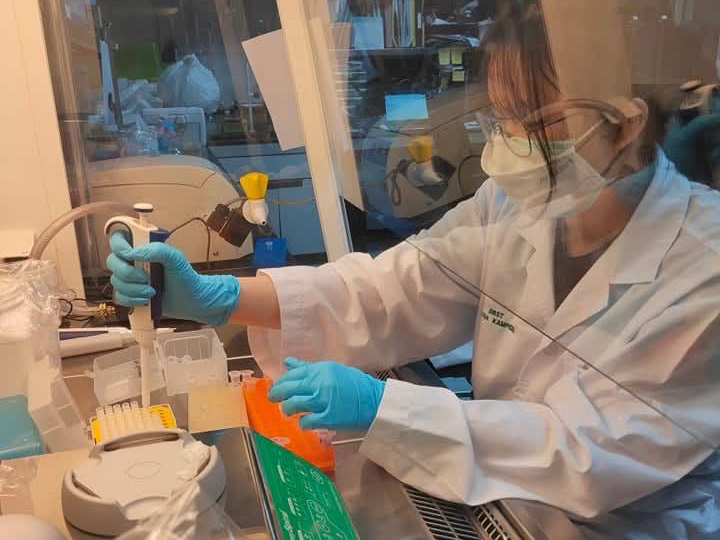The development of novel colorimetric test kit for detection of DNA and RNA viruses

- Kulpatch Chananam, Kunat Khongtong, Pakitta Kriangasame, Kiattipoom Rodpun, Wansika Kiatpathomchai, Rapheephat Suvannakad, Jantana Kampeera, Wansadej Jaroenram
- Mahidol Wittayanusorn School, Nakhon Pathom, Thailand
- Bioengineering and Sensing Technology Research Team, The National Center for Genetic Engineering and Biotechnology (BIOTEC), NSTDA, Thailand
Abstract
An accurate and portable diagnostic technique can effectively limit the spread of infectious diseases caused by viruses. Our novel test kit integrates loop mediated isothermal amplification (LAMP) with the pH-sensitive dye to deliver a blue-to-green color that is visible to the naked eye within 3 simple steps: 1) Genetic materials extraction. Insert a sample of interest into a tube containing extraction enzymes. 2) LAMP reaction with portable test box. Put a drop of extracted genetic materials into a tube containing LAMP solution and run the reactions for 45 minutes.
3) Visible read-out. LAMP solutions containing targeted genetic materials will have their color changed. Blind testing with 75 unknown samples was done with the test kit in order to calculate statistical accuracy compared with the testing results from the standard polymerase chain reaction (PCR). Moreover, molecular sensitivity tests were done to find the limit of detection (LOD) of the test kit. To demonstrate the versatile detection capability of our platform, the test kit’s testing solution was slightly modified by changing pathogen-specific primers, then challenged with various types of pathogens: SARS-CoV-2 (Covid-19) representing RNA virus infecting human, Mycobacterium (TB) representing bacteria infecting humans, Scale Drop Disease (SDDV) representing DNA virus infecting animals, Staphylococcus iniae representing DNA bacteria infecting animals, and Phytoplasmas representing parasite infecting plants. The whole diagnosis process of the developed test kit takes less than 1 hour from sampling to visible readout. This will be running on 96% accuracy compared to PCR and being 10 times more sensitive than the PCR, with the detection limit approaching 10 copies of the initial targeted genetic materials. Our portable, 5-dollar test box provides approximate efficiency to a thousand-dollar PCR machine, and a 5-min, equipment-free, genetic materials extraction procedure was also established. These have made the whole diagnosis process take less than 1 hour from sampling to visible readout within a cost of 2 dollars, 4-6 times faster, and 10-fold cheaper than conventional PCR methods. Finally, for the versatility test, all of the samples were diagnosed correctly. All of these factors are highlighting that its potential would be a future model for emerging point-of-care disease diagnoses in the future.